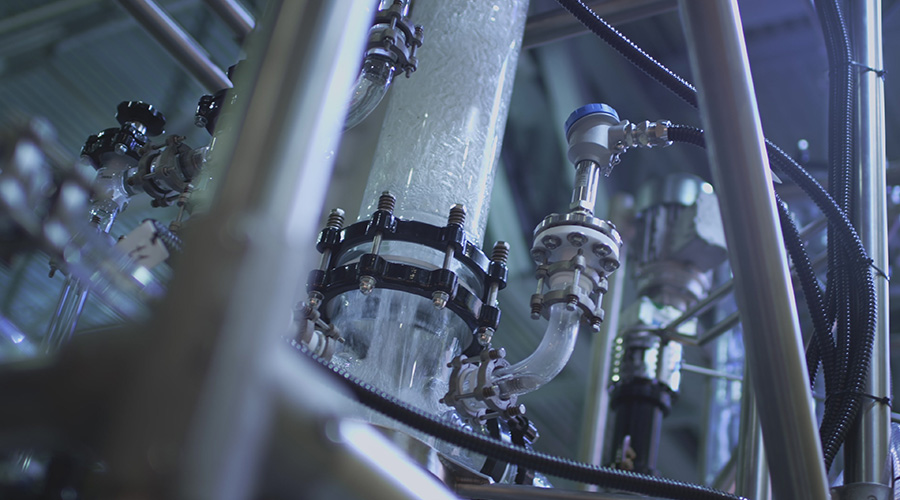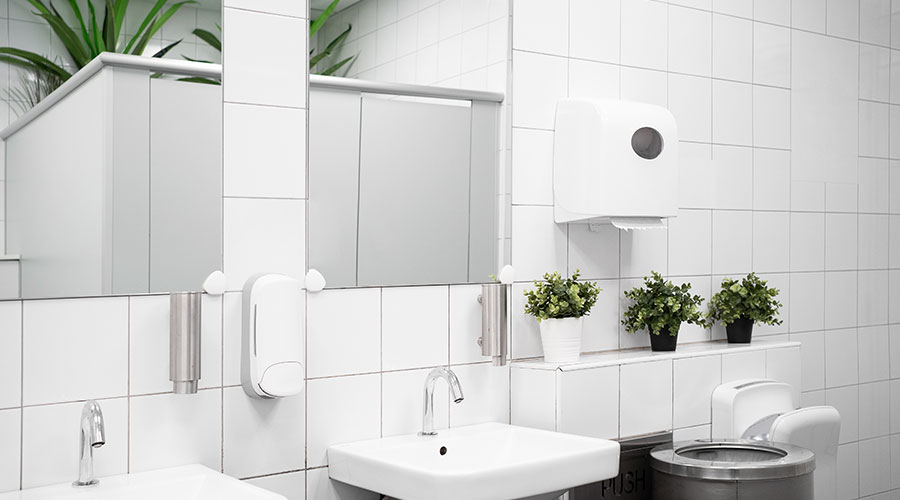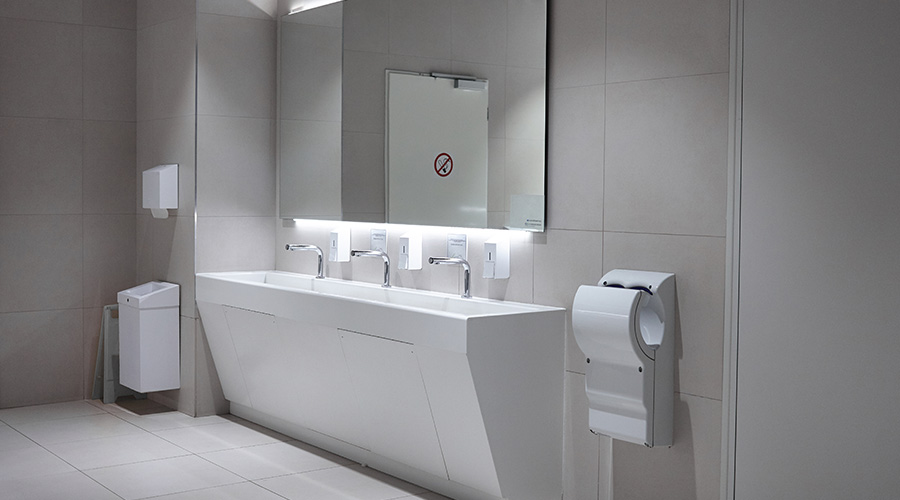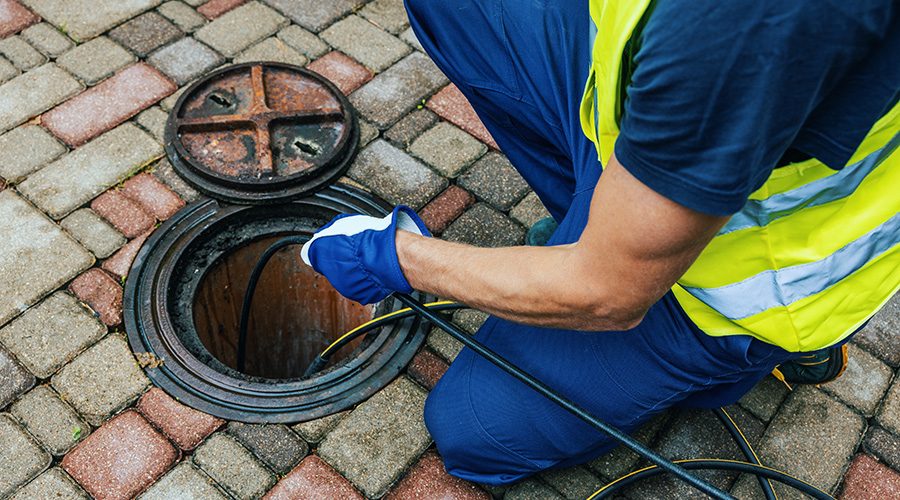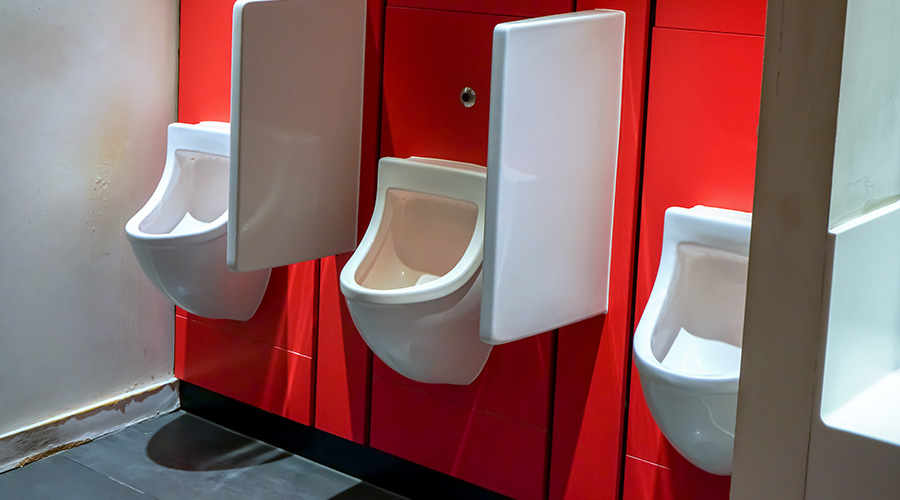Strategic Planning Can Combat Legionnaire’s Disease
A water management program can equip building owners with the critical actions designed to prevent Legionella growth, ensure water quality and keep occupants safe.
Legionnaire’s disease might not get the same kind of attention from the general public that it did in 1976, when 149 Legionnaires and 33 other persons were afflicted by the illness in and near a Philadelphia hotel. Of those 182 cases, 29 people died.
But nearly 50 years later, the illness remains a problem for many institutional and commercial facilities. Unfortunately, even within facilities, it tends to get overlooked.
“Water quality and premise plumbing is generally ignored by almost everybody until it’s a problem, especially for something like Legionella,” says Steve Rupar, senior vice president and drinking water practice leader with WSP, a consulting engineering firm, adding that facilities “are getting water from a water utility, and it’s delivered good. But that doesn’t mean that things can happen within your plumbing.”
The ongoing challenge for building owners and facility executives is to take steps that will detect and prevent the growth of Legionella, the bacteria that causes Legionnaire’s disease.
Looking for trouble
Facility plumbing and HVAC systems offer a host of opportunities for the growth of Legionella.
“Generally in terms of presence in facility plumbing and fixtures, it’s going to be in areas that don’t see a lot of flow,” Rupar says. “Stagnant water, old water and warmer water also can also help it to breed.”
Older water loses its chlorine disinfectant residual. Specific components to be concerned about include showers, hot tubs that might not be used, faucets that are not used often, cooling towers and even hot water heaters if they are not set properly.
“Generally, the main focus are things that are not being used frequently that’s leading to older water age, more stagnant water,” Rupar says.
Building owners and managers also should be aware of the possibility of Legionella growth in less obvious locations, says Karl Caouette, plumbing technical director with Henderson Engineers.
“Decorative fountains are another area,” Caouette says. “Less common areas would be your ice machines, water dispensers and misters — primarily, any kind of piping system that has domestic water in it.”
Legionella can grow in a range of areas within plumbing and HVAC systems, and its growth is not limited to only certain types of facilities.
“Those (growth) factors are definitely present in all facilities,” says Logan Stone, mechanical engineer with HGA, an architecture, engineering and design firm. “The real difference between the facility types would be the risk that you’re managing — for example, healthcare vs. an office building. You have a lot more immunocompromised patients that would be at a higher risk of accumulating Legionnaire’s disease, things like that from the bacteria. You really want to be extra attentive in those scenarios compared to others.”
Action plan
Developing a program to coordinate an organization’s efforts to combat Legionella in its facilities encompasses a host of decisions but ideally should start with the involvement of the managers and technicians who work daily with the facilities and systems involved.
“As much as these people on the front lines can get involved in design and construction early on and understand the systems and understand the maintenance that’s going to go into these systems, it makes a world of difference,” Stone says. “Everyone comes with their own brand of expertise, and each building is different.
“We call it a holistic design process — really understanding the different needs of not only the building owner but the building maintenance staff and the occupants. Balancing all of those items is very key. A lot of times, it starts with someone asking the question: What maintenance problems do you see in this existing facility? Or how can we improve upon problems you’ve seen in the past?”
The planning process also needs to include identifying where to look and what to look for related to the growth of Legionella.
“The first step in any kind of water management plan is to make sure that you actually perform a facility risk and on-site risk assessment first on the building’s mechanical and plumbing systems,” Caouette says. “Typically, this would involve hiring a water quality management specialist to review the building’s HVAC and plumbing systems and identify those areas where Legionella are most commonly found within those systems.”
Rupar says that to prevent Legionella growth in water heaters, the water temperature should be set to at least 140 degrees because Legionella typically grows in water that is between 70 and 120 degrees.
“If I was a facility owner, besides checking those taps and things that might not be being used on a regular basis and flushing them occasionally, what I’d be checking is chlorine residual levels, probably at your entry point and some other places around your building,” Rupar says. “If you’re getting water from utility, you’re required to maintain a detectable chlorine residual level. That’s something a facility owner can do with a simple test kit.”
Chlorine levels that are low or barely detectable indicate that technicians need to flush the systems more frequently.
“That’s probably the simplest thing that a facility owner can do is check on a regular basis — probably a weekly basis — your chlorine residual level,” he says. “If it’s looking low or non-existent, go ahead and flush it.”
An effective water management plan enables building owners to coordinate the many aspects of a critical effort.
“The message is that the water management program has an overarching umbrella to ensure that not only the disinfectant is in the range that is effective for Legionella control but that in addition the temperature and the water age are managed, as well,” says Melissa (Missy) Cain, environmental planning principal with HGA.
System testing is a critical step in the process of identifying Legionella growth.
“If any of the testing reveals the presence of Legionella in a facility’s water system, the first step should be to verify that all the control measures within the building system,” says Warren Rosenbrook, plumbing technical director with Henderson. “It’s also important to ensure that the entire water system is fully flushed to allow chlorine to reach areas, such as dead legs within a hot water heating system.”
Owners and managers need to assess the capabilities and workload of in-house staff in determining how to perform the needed testing.
“Most if not all local sample collections can be done and handled by in-house staff,” Rosenbrook says. “However, the samples must be submitted to a recognized testing lab that is certified by accreditation. They’ll give you the data you need to show that the work you’re doing is working. If you’ve got a problem, it’ll spell it out for you. But you don’t have to hire a specialist to do all the sampling.”
In some cases, owners — especially in healthcare facilities — will need to work with outside parties to complete the needed testing
“If we’re thinking about the need for third-party or consultative resources in a healthcare facility, one area where the organization would benefit from outside support is a trusted Legionella testing laboratory,” Cain says. “Most healthcare organizations do not perform their own Legionella tests, and current approved and defensible test methods for Legionella really can’t be performed effectively on site. There are some monitoring things you can do when you are in house, but for performing validation tests for Legionella, finding that testing partner is important.”
Dan Hounsell is senior editor for the facilities market. He has more than 30 years of experience writing about facilities maintenance, engineering and management.
Related Topics:








